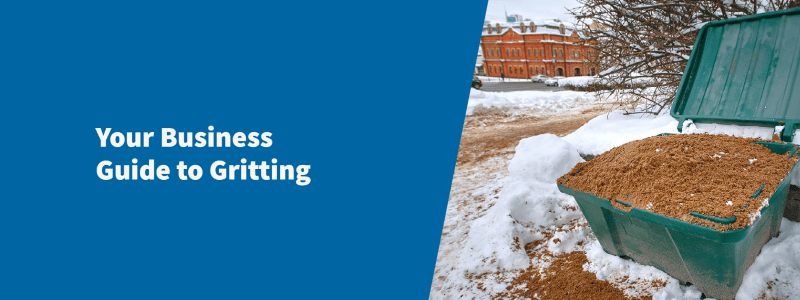While safety is an important aspect for your business all year round, the weather during winter offers a unique risk to staff and visitors. The level of risk changes depending on what your business does, with the size of the premises dictating how the winter weather impacts you. For more, gritting is a necessity during these times.
For icy and snowy weather, gritting the road, parking, and pedestrian areas outside your business will help keep people safe. It isn’t just trips and falls that are a danger. It is crashes and incidents in cars and other, larger commercial vehicles that are at risk.
This type of risk can be eliminated by being prepared and planning for the cold months ahead. Thinking about gritting the outside of your premises now could help. It may cause you a lot less stress in the months to come. Here is all you need to know about gritting.
How Does Grit Work?
The reason grit is used on icy surfaces is because the application of salt and grit to ice lowers the temperature water freezes. In doing this, the ice will melt and turn back into water. Alternatively, grit can be put on already frozen ground to help the ice melt. It is better the be ahead of the game but laying grit down before opening hours is still important.
What are the Laws About Gritting in the U.K?
The law states that the council must treat, to the best of their ability, roads that are in common use. There are over 200,000 miles of council-ran roads and while it wouldn’t be financially viable to grit them all (as well as difficult to access for gritter lorries), the law does indeed state they must do what is reasonable. The reasoning should be accommodating the busiest roads and pavements to ensure safety.
Types of Gritting Salt
There are two types of gritting salt. These are white salt and brown salt. While these may simply sound like the colours of the salt – and in part, it is – the colour does make for a key difference.
Brown salt is easily recognisable. You will notice this as the salt that leaves the brown colour – which is clay – behind when the ice has melted. This can be trodden into buildings and causes an additional problem with mess. It is this brown clay that you can see on the ground once ice has melted.
White salt is less messy, as the salt deteriorates into the ice water when it melts, and can be seen as a good alternative to brown salt. While white salt may be better when it comes to mess, it is more expensive than brown salt.
When to Start Gritting Your Business
The coldest seasons in the U.K are December, January and February. So to this end, you need to ensure that you need to have salt at your premises. That, or have hired an external contractor for these dates. But the weather is becoming more erratic. The months of March and April have seen snow and ice in recent years. It is best to be prepared from late October. With Direct365’s gritting services, you simply input the temperature you wish to receive the service (either forecast below 1 degree or below 0 degrees) and sit back in the knowledge that Direct365 will be your premises ice free.
How Much Grit Should You Use?
It’s difficult to say and mostly relies on the particular weather of your premises. If you are gritting a car park, for example, you should grit the area in the knowledge that the cars will drive the salt across the forecourt.
It is always helpful to have a lot of salt available and on your property if you are not using a service provider. Direct365’s winter range offers everything you need to keep your business safe during the frosty months.
For further details on our winter range, click on the banner below.


